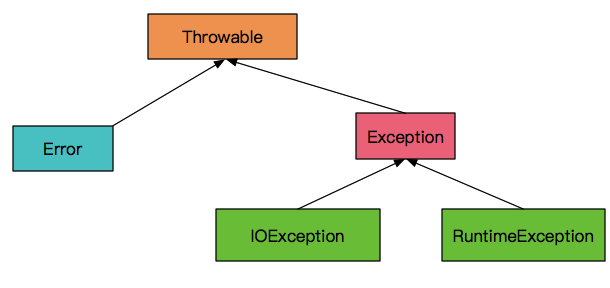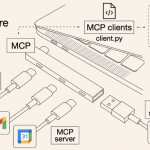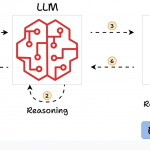本文概览:介绍了异常种类、异常堆栈和自定义异常。
1 异常种类
异常层次结构为:

- 对于Erro类【未检查异常】,描述的是系统内部错误类和资源耗尽错误。在代码中不抛出这种类型的对象,只需要关注Exception层次结构。
- RuntimeExcetion【未检查异常】,程序运行过程中才可能发生的异常。一般为代码的逻辑错误,例如:数组下标越界,空指针、类型转换错误等。我们在代码中自定义的异常都属于该类型。
- IOException【已检查异常】,编译期间可以检查到的异常。显式的进行处理,比如捕获或者直接通过throws向上抛出,比如 FileNotFoundException等。
2 堆栈
1、 堆栈信息理解
打印最上面的就是 最底层抛出异常的地方。举例如
|
1 2 3 4 5 6 7 8 9 |
main(){ f1(); } f1(){ f2(); } f2(){ f3() } |
如果执行main()时f3()有异常,则此时打印堆栈信息如下:
f3()异常
f2()位置
f1()位置
main()位置
2、堆栈信息的传递
|
1 2 3 4 5 6 7 8 9 10 11 12 13 14 15 16 17 18 19 20 21 22 23 24 25 26 27 |
public class TestExcetpion { private void f1() { throw new RuntimeException("f1"); } private void f2() { try { f1(); } catch (Exception e) { throw new RuntimeException("f2"); } } public void f3() { try{ f2(); }catch (Exception e){ throw new RuntimeException("f3",e);} } public static void main(String[] args){ TestExcetpion e = new TestExcetpion(); e.f3(); } } |
如下f3的堆栈信息只能到f2,不能延续到f1了。
Exception in thread “main” java.lang.RuntimeException: f3
at exception.TestExcetpion.f3(TestExcetpion.java:25)
at exception.TestExcetpion.main(TestExcetpion.java:31)
……..
Caused by: java.lang.RuntimeException: f2
at exception.TestExcetpion.f2(TestExcetpion.java:17)
at exception.TestExcetpion.f3(TestExcetpion.java:23)
… 6 more
(2)如果修改f3
|
1 2 3 4 5 6 |
public void f2() { try{ f1(); }catch (Exception e){ throw new RuntimeException("f2",e);} } |
f3的堆栈信息才能向下延续到f1`
Exception in thread “main” java.lang.RuntimeException: f3
at exception.TestExcetpion.f3(TestExcetpion.java:23)
at exception.TestExcetpion.main(TestExcetpion.java:29)
……
Caused by: java.lang.RuntimeException: f2
at exception.TestExcetpion.f2(TestExcetpion.java:15)
at exception.TestExcetpion.f3(TestExcetpion.java:21)
… 6 more
Caused by: java.lang.RuntimeException: f1
at exception.TestExcetpion.f1(TestExcetpion.java:9)
at exception.TestExcetpion.f2(TestExcetpion.java:13)
… 7 more
3 自定义异常
1、自定义异常作用
是为了对于每一种异常都设置一个错误码。
2、自定义异常
|
1 2 3 4 5 6 7 8 9 10 11 12 13 14 15 16 17 18 19 20 21 22 23 24 25 26 27 28 29 30 31 32 33 34 35 36 37 38 39 |
public class MonitorException extends RuntimeException { private String errorCode; private String errorMsg; private MonitorErrorEnum errorEnum; public MonitorException() { super(); } public MonitorException(String errorCode, String errorMsg) { super(errorCode); this.errorCode = errorCode; this.errorMsg = errorMsg; } public String getErrorCode() { return errorCode; } public void setErrorCode(String errorCode) { this.errorCode = errorCode; } public String getErrorMsg() { return errorMsg; } public void setErrorMsg(String errorMsg) { this.errorMsg = errorMsg; } public MonitorErrorEnum getErrorEnum() { return errorEnum; } public void setErrorEnum(MonitorErrorEnum errorEnum) { this.errorEnum = errorEnum; } } |
3、自定义错误码
|
1 2 3 4 5 6 7 8 9 10 11 12 13 14 15 16 17 18 19 20 21 22 23 24 25 26 27 28 29 |
public enum MonitorErrorEnum { SUCESS("0", "成功"), FAIL("9999", "失败"); private String errCode; private String errMessage; MonitorErrorEnum(String errCode, String errMessage) { this.errCode = errCode; this.errMessage = errMessage; } public String getErrCode() { return errCode; } public void setErrCode(String errCode) { this.errCode = errCode; } public String getErrMessage() { return errMessage; } public void setErrMessage(String errMessage) { this.errMessage = errMessage; } } |
参考
https://www.cnblogs.com/aspirant/p/10790803.html
(全文完)






